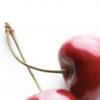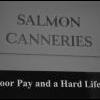hello again everyone!
searched the forum topics and noted that there were alot of methods that usually use steam to eliminate micro-organisms, just a few questions though
1. is there an existing method to verify steam quality?
2. If there is, how do you take a sample for verification?
3. How do you ensure that the emitted steam is not contaminated as well?
4. Any standards on steam quality?
5. If it is used to directly cook food, are there any thermophiles (bacteria that can survive extreme heat) that can survive?
Your feedbacks would be greatly appreciated! Cheers!
- Home
- Sponsors
- Forums
- Members ˅
- Resources ˅
- Files
- FAQ ˅
- Jobs
-
Webinars ˅
- Upcoming Food Safety Fridays
- Recorded Food Safety Fridays
- Upcoming Hot Topics from Sponsors
- Recorded Hot Topics from Sponsors
- Food Safety Live 2013
- Food Safety Live 2014
- Food Safety Live 2015
- Food Safety Live 2016
- Food Safety Live 2017
- Food Safety Live 2018
- Food Safety Live 2019
- Food Safety Live 2020
- Food Safety Live 2021
- Training ˅
- Links
- Store ˅
- More

















